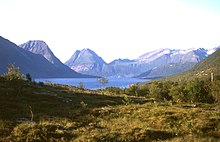|
Danish straits The Danish straits are the straits connecting the Baltic Sea to the North Sea through the Kattegat and Skagerrak. Historically, the Danish straits were internal waterways of Denmark; however, following territorial losses, Øresund and Fehmarn Belt are now shared with Sweden and Germany, while the Great Belt and the Little Belt have remained Danish territorial waters. The Copenhagen Convention of 1857 made all the Danish straits open to commercial shipping.[1] The straits have generally been regarded as an international waterway. Toponymy and geographyFive straits are named 'belt' (Danish: bælt), the only ones in the world[clarification needed]. Several other straits are named 'sound' (Danish, Swedish and German: sund). Where an island is situated between a "belt" and a "sound", typically the broader strait is called "belt" and the narrower one is the "sound":
 seen from Helsingborg
Crossing the straitsDuring the 20th and 21st centuries the surrounding areas grew in population and cross-border trade developed, particularly as part of the European single market. The European Union Scandinavian–Mediterranean Corridor runs north-south through the Danish straits.  Ferries crossed many of the straits but some of these have been replaced with fixed links to reduce journey times. Most significantly, since 1999 the powerhouses of Hamburg and Copenhagen have been linked without the use of ferries. The fixed links include:
Etymology of "sound" / "sund" The Germanic word "sound" has the same root as the verb to sunder in the meaning of "to separate". The Old Norse form of that verb is sundr. In Norway hundreds of narrow straits separating islands and combining fjords or outer parts of fjords are named "Sund". Another explanation derives "sound" from an ancient verb "sund" in the meaning of to swim. That way a sound is a swimmable strait. In the Swedish language any strait is called "sund". The Germanic word "sound" is not related to the Romance languages originated word "sound", which has developed from the Latin sonus.[citation needed] See alsoReferences
|